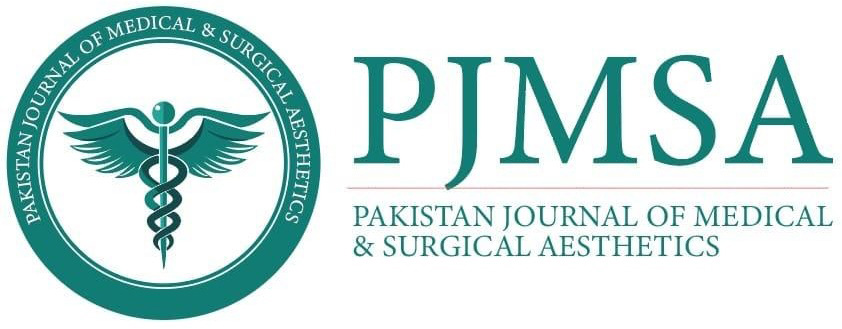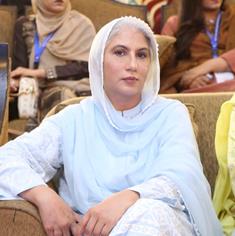
Inaugural Message: A Milestone for Aesthetic Medicine in Pakistan
|
|
Dr. Samina Mohsin
|
With immense pride, I present the inaugural message for the Pakistan Journal of Medical and Surgical Aesthetics (PJMSA), a long-awaited platform committed to advancing scientific knowledge and fostering academic dialogue in Pakistan's rapidly evolving field of Aesthetic Medicine. Our mission is to advance the science and practice of Aesthetic Medicine through the publication of high-quality, peer-reviewed research.
Globally, the scope of Aesthetic Medicine continues to expand from skin rejuvenation and body contouring to regenerative and anti-aging therapies, representing a rapidly growing sector with substantial economic and clinical potential. For Pakistan, this presents a unique and timely opportunity. We can empower Aesthetic Physicians and integrate our practitioners into the global aesthetic ecosystem by establishing a credible, structured framework for education, accreditation, and regulation. This would also support the growth of medical tourism, attract international clientele, and contribute significantly to foreign exchange earnings.
Aesthetic Medicine has emerged globally as a distinct and dynamic specialty, focused on minimally to non-invasive procedures that enhance physical appearance, elevate self-esteem, and improve overall quality of life. Blending medicine, technology, and artistry, it stands apart from traditional clinical disciplines. Worldwide, it is practiced by professionals trained through continuing medical education, rigorous hands-on training without the need for a traditional residency program, reflected in international models such as the UK’s Level 7 certification framework that serves as a global benchmark for competency in this field.
Given its elective and appearance-oriented nature, Aesthetic Medicine is predominantly practiced in the private sector around the world. These services, typically not covered by insurance or national health systems, cater to individuals seeking enhancement by choice rather than medical necessity. In Pakistan, where the public health system is already under pressure from a dual burden of communicable and non-communicable diseases, integrating Aesthetic Medicine into the public sector is neither feasible nor appropriate. Therefore, the private sector must continue to lead the development of this specialty, supported by appropriate regulation to ensure safety, ethical practice, and professional integrity.
Despite global advancements, Aesthetic Medicine in Pakistan faces several challenges. Foremost among these is the lack of formal recognition for pioneer practitioners who have devoted over a decade to this field. The absence of informed regulatory understanding has led to vague and restrictive policies, hampering the growth and credibility of qualified professionals. Compounding the issue, certain interest groups have misinformed decision-makers, leading to policy setbacks that have unfairly obstructed progress.
In 2022, the Pakistan Medical Commission (PMC) took a landmark step by developing a credentialing pathway for Aesthetic Physicians, aligned with international benchmarks such as the UK's Level 7 framework. This initiative, the result of extensive consultations with dermatologists and plastic surgeons, was poised to bring much-needed structure to the profession. However, with the transition from PMC to the Pakistan Medical and Dental Council (PMDC), the proposed framework was unjustifiably disregarded without a legal basis or due consideration.
Aesthetic Medicine was recognized as a distinct discipline by the PMDC recently, a welcome development, especially for newcomers. It is imperative to note that policymakers move forward with actionable and supportive regulations. Patient safety, professional competency, and ethical standards must remain at the forefront. This demands the involvement of experienced pioneer practitioners with robust training backgrounds, and a legacy of teaching and service that is critical in shaping national protocols and standardizing educational pathways.
With the launch of PJMSA, we mark a new chapter in the academic evolution of Aesthetic Medicine in Pakistan. This journal reflects our unwavering commitment to scientific excellence, ethical leadership, and a vision that looks boldly toward the future. Our goal is to dispel misconceptions, raise the bar for clinical standards, and create a strong academic foundation that benefits both practitioners and patients.
This inaugural issue marks not just a publication, but the beginning of a movement, one that values evidence-based practice, respects patient autonomy, and promotes realistic expectations. Together, we will build a future where Aesthetic Medicine in Pakistan thrives with integrity, innovation, and global relevance.






